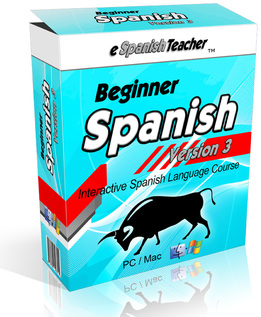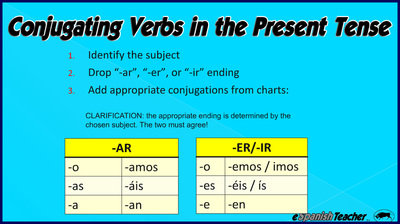 For some, pronouncing the Spanish R comes easily and naturally. But for others it takes practice and patience. If you fall into the second camp, prepare to have all your pre-conceived notions about Spanish pronunciation shattered in just a matter of minutes. Ok, maybe that's a bit dramatic, but nevertheless, this technique has never failed any of my students. So get ready because this could be the blog post that sets you free. In just a few minutes, it's very possible you'll be rolling your R's like Lou Diamond Phillips singing La Bamba in my favorite move from 1987. The hard English "R" In English we use what I call the "hard R", which is best depicted in a pirate's growl..."Arghh". This is an extreme example, I know, but I use it to emphasize what you don't want to say when speaking the Spanish R. English words such as "are", "senior", and "air" are additional examples of what not to use as your guiding examples when learning the Spanish R. The Spanish "R" Contrast those with the Spanish "R", which is much lighter, faster, and delicate. At its essence, the Spanish R is pronounced when a small puff of air coming from your through that--with the tip of your tongue lightly touching the roof of your mouth--pushes your tongue forward just slightly enough for the air to escape. This action makes a little bump sound, which is the sound you want to target. The proper double R sound can be produced by a rapid repeat of this motion, where your tongue flaps back and forth near the roof of your mouth as one by one little pockets of air escape rapidly (what I refer to in the video below as the helicopter or cat sound). Para Think of the Spanish word "Para", which means "to", "for", or "stop". English speakers will have a tendency to pronounce it "Par-uh", which is incorrect. The correct pronunciation is more similar to "Pod-uh". As a first step, you can simply replace the "R" in "Para" with an English "D" and pronounce it "Pod-uh". Notice how when you say it correctly this way the tip of your tongue naturally finds its place near the roof of your mouth for a split second. This first step in itself should prove that you can roll your R's! The next piece is to repeat "Pod-uh" over and over again as you slowly lighten the degree to which your tongue touches the roof of your mouth each time you say "R". Start repeating the word slowly and don't be afraid to over-emphasize each letter at first so you can really feel your tongue strike upward against the top of your mouth...POD-uh, POD-uh, POD-uh... Gradually speed up the repetition and as you do, scale back the force of each tongue strike. In English we have heavy, forceful sounds, so training your mouth muscles to be lighter and more delicate may sound funny, but it's a big part of proper pronunciation as well as developing an authentic Spanish accent. Repeating this exercise will train the muscles in your tongue and mouth to get more agile, soft, and quick. I like to compare this to a soccer player who begins with heavy, solid feet, without a lot of control. But over time she learns to be light and soft on her feet to really glide swiftly with the ball. Udder and Butter Two more examples of words that can help you develop this technique are "udder" and "butter". Repeat the exercise above with these two words. As you say them faster and faster and as your tongue becomes lighter and lighter, drop the "-er" and simply extend the "d" and "t" over and over again, like this: uddddddddddd and buttttttt Doing this exercise with these two words will specifically help improve your ability to roll the double R. The video below will explain this with more clarity, but the desired objective is to make the helicopter sound. This technique has helped lots of students, many of whom were convinced they would never learn to roll their R's. Instead of stopping here, watch the video below to actually hear these sounds and practice rolling the Spanish R and double R with me.  After six months of planning, design, & development, we are pleased to announce the launch of our revised & refreshed Beginner Spanish Version 3! The team at eSpanishTeacher is extremely proud of this product and know that our customers will love it too. Boasting improved audio, more effective visuals, more comprehension exercises, and 4 brand new lessons, Beginner Spanish Version 3 is the complete package for folks wanting to learn to speak Spanish quickly. And like previous offerings, Version 3 ships with 101 Spanish Verbs as a free bonus! So you get even more great Spanish instruction in a personalized setting with from an actual Spanish teacher for the same great price. That's right, we're giving you more language learning content without increasing the price. This is a no brainer for people wanting to learn Spanish or brush up on speaking skills you haven't used in some time. Past customers have told us that the course also works for younger audiences. So don't wait any longer. Click here to start learning and speaking Spanish today! What's the difference between por and para? This is another common question you'll likely have when learning to speak Spanish. In Spanish, in order to say "to" or "for", you would need to use the words "por" or "para". These words can be confusing so it's important to learn the definition and translation of each. Let's take a look:
Por - through, by, for, to, by way of, by means of examples: Vamos por coche. = Let's go by car. Gracias por la ayuda. = Thanks for the help. Para - to, for, in order to examples: Este regalo es para usted. = This gift is for you. Para hacerlo con éxito, hay que practicar. = In order to do it successfully, you must practice. Here is a great chart to help you visualize the difference between Por and Para: |
AuthorThis is where we chat about all things Spanish. Feel free to ask a question, challenge me, passionately disagree, or rant about whatever. Just make it interesting. Archives
August 2018
Categories
All
|









 RSS Feed
RSS Feed
